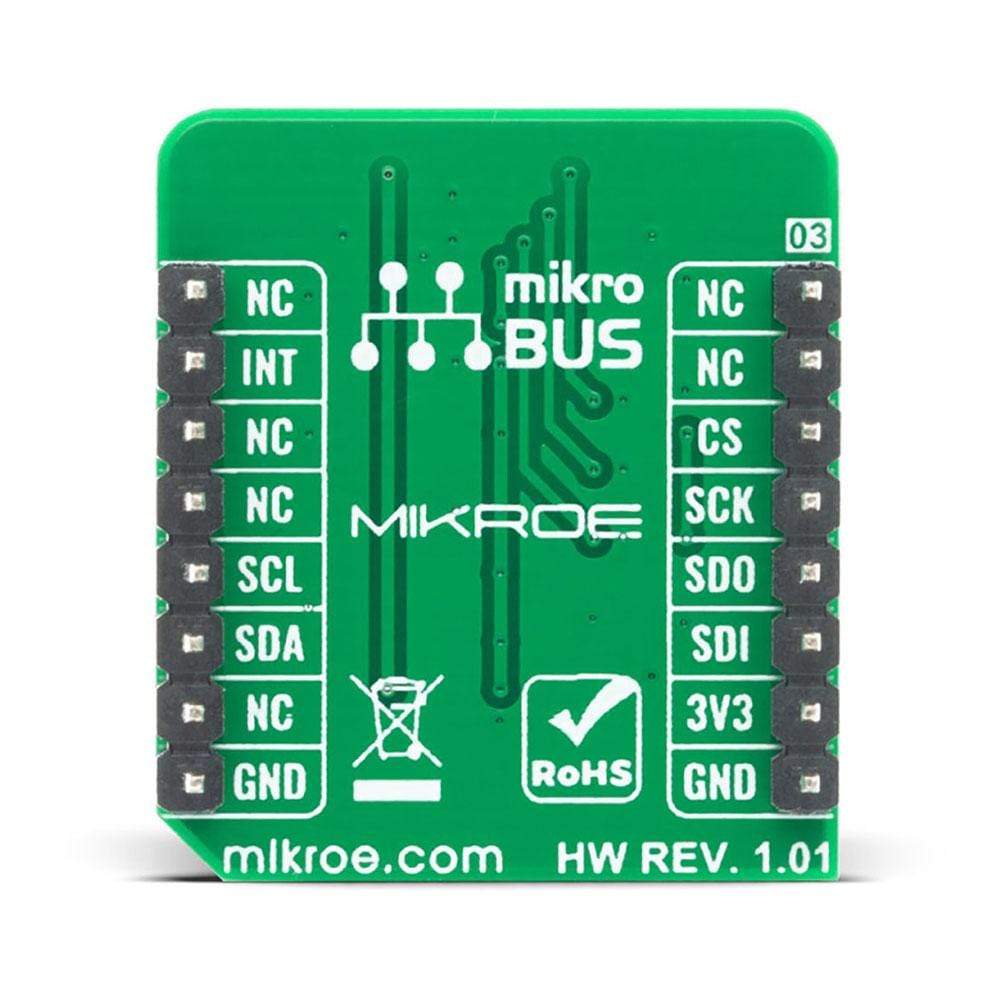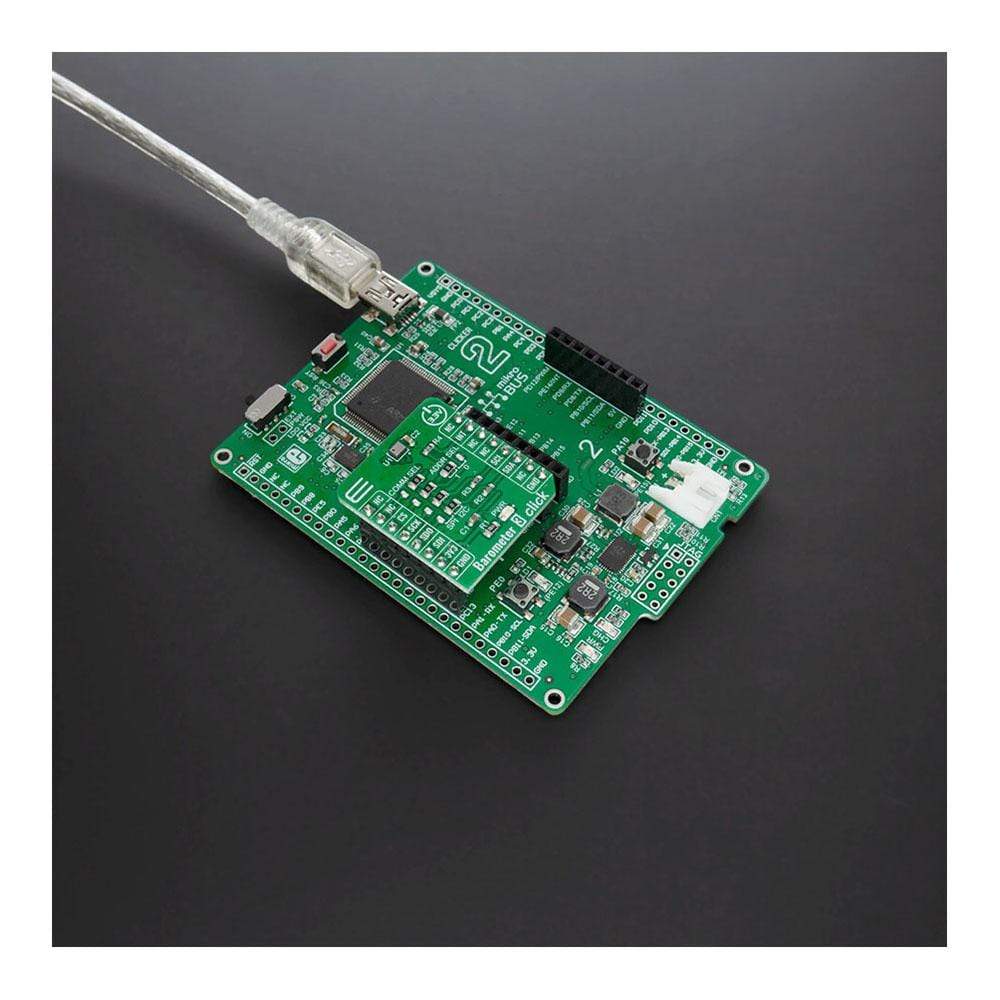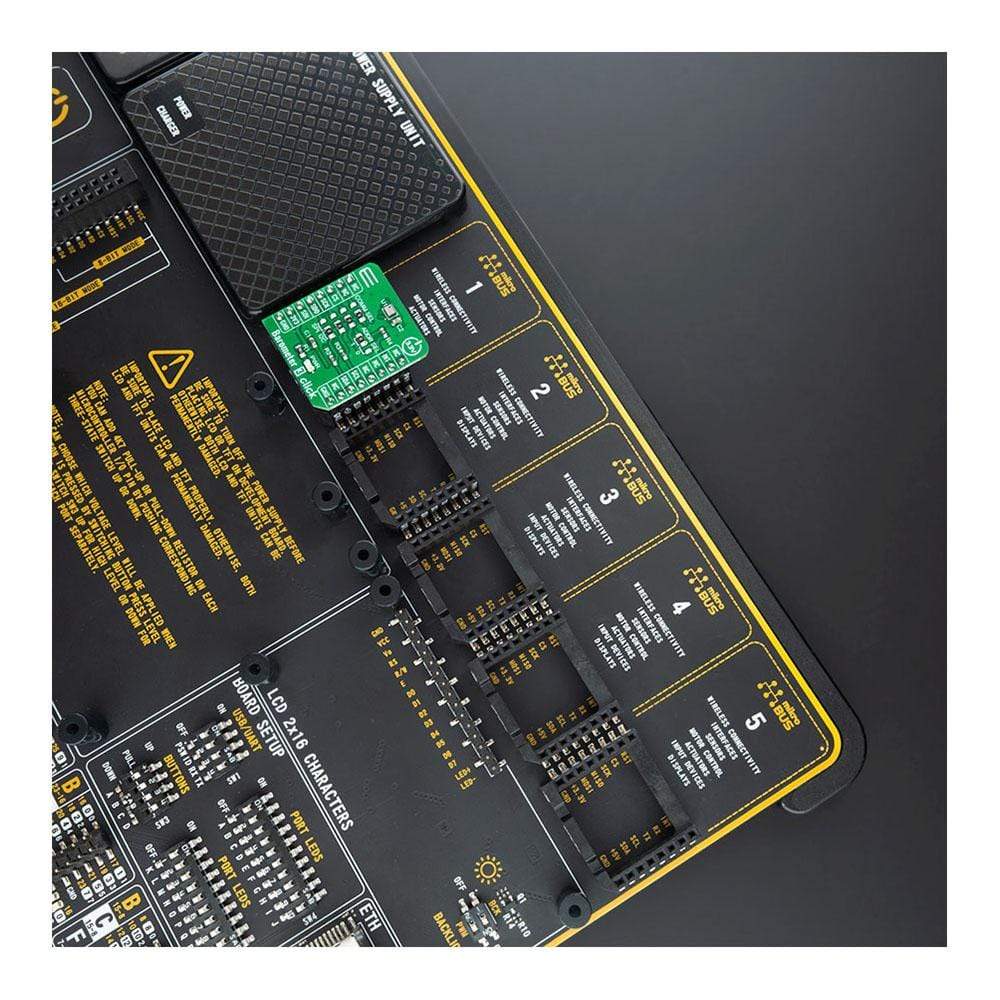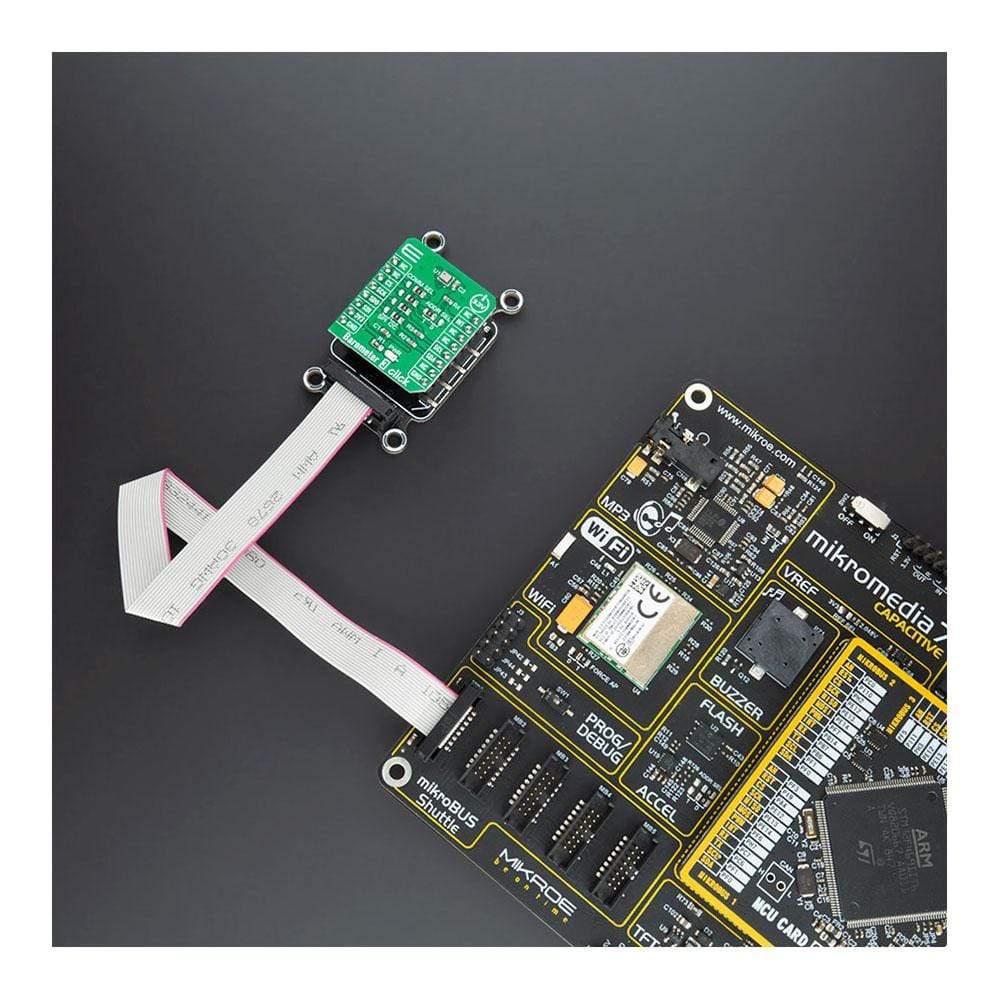





Overview
The Barometer 3 Click Board™ is a compact add-on board for applications that require digital barometric air pressure measurement. This board features the DPS368, a digital barometric air pressure sensor from Infineon. It offers high accuracy and low current consumption, capable of measuring both pressure and temperature. The pressure sensor element is based on a capacitive sensing principle which guarantees high precision during temperature changes and due to its robustness it can be used in a harsh environment. Its also ideally suited for wearable sensors (such as fitness tracking, step counting, fall detection), home appliances (for airflow control in HVAC, water level detection, intruder detection) and health care (for fall detection, airflow monitoring, smart inhalers).
The Barometer 3 Click Board™ is supported by a mikroSDK compliant library, which includes functions that simplify software development. This Click Board™ comes as a fully tested product, ready to be used on a system equipped with the mikroBUS™ socket.
Downloads
Le Baromètre 3 Click Board™ est une carte complémentaire compacte pour les applications qui nécessitent une mesure numérique de la pression atmosphérique barométrique. Cette carte est équipée du DPS368, un capteur de pression atmosphérique barométrique numérique d'Infineon. Il offre une grande précision et une faible consommation de courant, capable de mesurer à la fois la pression et la température. L'élément capteur de pression est basé sur un principe de détection capacitif qui garantit une grande précision lors des changements de température et, grâce à sa robustesse, il peut être utilisé dans un environnement difficile. Il est également parfaitement adapté aux capteurs portables (tels que le suivi de la condition physique, le comptage des pas, la détection des chutes), aux appareils électroménagers (pour le contrôle du flux d'air dans le CVC, la détection du niveau d'eau, la détection des intrusions) et aux soins de santé (pour la détection des chutes, la surveillance du flux d'air, les inhalateurs intelligents).
Le Baromètre 3 Click Board™ est pris en charge par une bibliothèque compatible mikroSDK, qui comprend des fonctions qui simplifient le développement logiciel. Cette Click Board™ est un produit entièrement testé, prêt à être utilisé sur un système équipé du socket mikroBUS™.
| General Information | |
|---|---|
Part Number (SKU) |
MIKROE-4190
|
Manufacturer |
|
| Physical and Mechanical | |
Weight |
0.017 kg
|
| Other | |
Country of Origin |
|
HS Code Customs Tariff code
|
|
EAN |
8606027380167
|
Warranty |
|
Frequently Asked Questions
Have a Question?
Be the first to ask a question about this.






